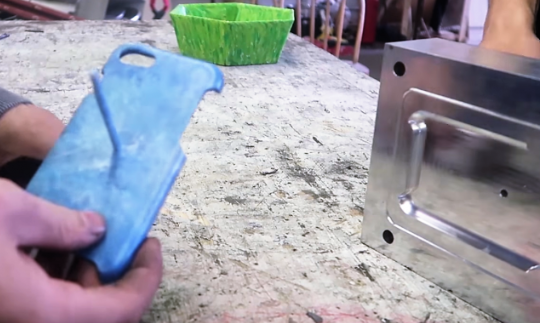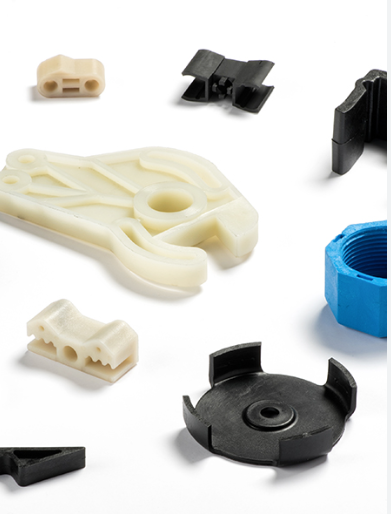Yes, epoxy can be injection moulded, though with specific considerations.
Overview of Epoxy Resins
Epoxy resins, widely recognized for their strong adhesive qualities and chemical resistance, form a significant part of various industrial applications. These thermosetting polymers, typically characterized by their durable bonds and high thermal stability, offer versatility in various manufacturing processes.

Properties of Epoxy Resins
Chemical Composition: Epoxy resins consist of a unique blend of molecules that contain an epoxide group. This molecular structure is primarily responsible for the resin’s robust adhesive characteristics and its ability to form strong cross-linking bonds upon curing.
Thermal and Chemical Resistance: Epoxy resins stand out for their remarkable resistance to heat and chemicals. They maintain structural integrity at temperatures as high as 150°C and resist degradation from a wide range of chemicals. This attribute makes them suitable for coatings in harsh environments.
Mechanical Strength: Epoxy resins exhibit superior mechanical strength, with tensile strength values often exceeding 7,000 psi. This high strength-to-weight ratio contributes significantly to their popularity in load-bearing applications.
Electrical Properties: Epoxies are excellent insulators, demonstrating a dielectric strength of around 14-17 kV/mm. Their ability to prevent electrical conductivity makes them ideal for electronic applications.
Applications of Epoxy in Industry
Aerospace: In the aerospace sector, epoxy resins play a crucial role due to their lightweight yet strong nature. They are used in the manufacturing of components where strength-to-weight ratio is vital, such as in aircraft fuselages.
Automotive: The automotive industry utilizes epoxy for creating lightweight parts that contribute to fuel efficiency. Epoxy-based composites are often used in manufacturing car bodies, reducing overall vehicle weight without compromising safety.
Electronic Devices: Epoxy resins, with their high electrical insulation properties, are extensively used in the electronics industry. They are crucial in circuit boards and insulators, providing both structural support and preventing electrical failures.
Marine Applications: Given their resistance to water and corrosion, epoxy resins are a preferred material for marine coatings and boat building. They extend the life of marine structures by protecting them from harsh oceanic conditions.
Injection Moulding Process
Injection moulding stands as a pivotal process in the manufacturing industry, transforming materials into complex and intricate shapes with high precision and repeatability. This process involves injecting molten material into a mould at high pressure, which then cools and solidifies into the final product.
Basics of Injection Moulding
Moulding Cycle: The injection moulding cycle begins with clamping the mould, followed by injection of the molten material. After the material fills the mould, it cools and solidifies. The mould then opens, and the part ejects. Cycle times can vary from a few seconds to minutes, depending on part complexity and size.
Mould Design: Precision in mould design is critical for achieving the desired product quality. Moulds, typically made from steel or aluminum, must withstand high pressure and temperature without deforming.
Injection Moulding Machines: These machines play a vital role in controlling the injection process. They consist of a material hopper, an injection ram or screw-type plunger, and a heating unit. Clamp force, which keeps the mould closed during injection, can range significantly, often measured in tons, indicating the size and capacity of the machine.
Materials Used in Injection Moulding
Thermoplastics: The most commonly used materials in injection moulding are thermoplastics. Examples include polyethylene (PE), polypropylene (PP), polystyrene (PS), and acrylonitrile butadiene styrene (ABS). These materials offer flexibility in processing and are recyclable.
Thermosetting Plastics: Unlike thermoplastics, thermosetting plastics permanently set after heating. They are suitable for high-temperature applications but cannot be remelted or reshaped. Examples include epoxies and phenolic resins.
Elastomers: Rubber-like materials known as elastomers, such as silicone, provide flexibility and are often used in products requiring elastic properties.
Epoxy in Injection Moulding
Epoxy resins, renowned for their exceptional mechanical properties and thermal stability, find increasing use in injection moulding applications. This process allows for the production of complex shapes with high precision, utilizing the unique characteristics of epoxy resins.
Compatibility of Epoxy with Injection Moulding
High Mechanical Strength: Epoxy resins provide superior mechanical strength compared to many conventional moulding materials. This strength ensures durability and longevity of the moulded parts.
Thermal Resistance: Epoxy’s ability to withstand high temperatures makes it suitable for applications that require thermal stability. It retains its properties at temperatures where other materials may fail.
Chemical Resistance: The chemical inertness of epoxy resins makes them ideal for use in corrosive environments. This resistance extends the lifespan of products, especially in industrial and chemical applications.
Key Considerations for Using Epoxy in Injection Moulding:
- Viscosity: Epoxy resins have higher viscosity than traditional thermoplastics, which can affect the moulding process.
- Curing Time: The curing time of epoxy resins can be longer, impacting production speed and efficiency.
Challenges in Moulding Epoxy Resins
Mould Design and Maintenance: Due to epoxy’s adhesive nature and high curing temperature, mould design and maintenance become critical. Moulds require regular cleaning and may need a release agent to prevent sticking.
Cost Factors:
- Material Costs: Epoxy resins are generally more expensive than standard thermoplastics, impacting the overall cost of production.
- Energy Consumption: Higher temperatures required for processing epoxy can lead to increased energy consumption.
Process Control and Optimization:
- Temperature Management: Precise control of temperature is crucial to ensure proper curing and avoid defects.
- Injection Pressure and Speed: Optimizing these parameters is essential to achieve the desired quality and minimize defects like air entrapment or incomplete filling.
Comparative Analysis
The choice of materials in moulding plays a pivotal role in determining the quality, cost, and applicability of the final product. In this analysis, we compare epoxy resins with other common moulding materials to highlight their differences and specific use-cases.
Epoxy vs Other Moulding Materials
| Feature | Epoxy Resin | Thermoplastics (e.g., ABS, PE) | Thermosetting Plastics (e.g., Phenolic) | Elastomers (e.g., Silicone) |
|---|---|---|---|---|
| Mechanical Strength | Very High (over 7,000 psi) | Moderate to High | High | Low to Moderate |
| Thermal Resistance | Excellent (up to 150°C) | Variable, generally lower | Good | Good |
| Chemical Resistance | Excellent | Moderate to Good | Good | Excellent |
| Cost | Higher | Lower | Moderate | Moderate to High |
| Curing Time | Longer | Shorter | Moderate | Varies |
| Flexibility | Rigid | Flexible | Rigid | Very Flexible |
| Recyclability | Low | High | Low | Moderate |
| Application Areas | Aerospace, Marine | Consumer Goods, Packaging | Electrical Components | Seals, Gaskets |
This table demonstrates that while epoxy resins offer superior mechanical strength and thermal resistance, they come with higher costs and longer curing times. In contrast, thermoplastics provide a balance between performance and cost-effectiveness, making them suitable for a wide range of consumer applications.
Cost-Benefit Analysis of Using Epoxy in Moulding
Advantages:
- Durability: Epoxy’s high strength and resistance increase the lifespan of products, reducing the need for frequent replacements.
- Performance in Extreme Conditions: Ideal for applications requiring high thermal and chemical resistance.
Cost Considerations:
- Material Expense: The cost of epoxy resin is generally higher than other moulding materials, affecting the overall production budget.
- Energy Requirements: Higher processing temperatures can lead to increased energy costs.
Long-Term Benefits:
- Reduced Maintenance Costs: Products made with epoxy often require less maintenance due to their durability.
- Market Value: High-performance characteristics of epoxy-based products can command a higher market price.

Technological Innovations in Moulding Epoxy
The field of epoxy moulding has seen significant technological advancements, leading to more efficient, cost-effective, and high-quality production processes. These innovations not only enhance the capabilities of epoxy resins in various applications but also open new avenues for their utilization.
Recent Advances in Epoxy Moulding Techniques
Improved Curing Processes: Modern techniques have reduced the curing time of epoxy, which traditionally could be lengthy. Advances in UV curing technology have enabled faster curing times, significantly enhancing production speed.
Enhanced Material Properties: Researchers have developed epoxy formulations with improved properties. For instance, new epoxies offer higher thermal resistance, withstanding temperatures up to 200°C, and increased mechanical strength, reaching tensile strengths of approximately 8,000 psi.
3D Printing with Epoxy: The integration of epoxy resins in 3D printing has been a breakthrough. This technology allows for more complex geometries and finer details in moulded parts, with layer resolutions as fine as 50 micrometers.
Automation in Moulding Processes: Automation technologies have streamlined the epoxy moulding process, leading to more consistent quality and reduced labor costs. Robotics and AI-driven systems contribute to precise control over moulding parameters.
Case Studies: Successful Epoxy Moulding Projects
Aerospace Components: A notable project involved using epoxy resins to mould critical aerospace components. These components, withstanding temperatures exceeding 150°C and pressures typical in aerospace environments, demonstrated the material’s suitability for high-performance applications.
Marine Structures: In the marine sector, epoxy has been used to mould large-scale structures like boat hulls. The moulded parts showed excellent resistance to saltwater corrosion and high durability, with a lifespan extending over 20 years.
Automotive Parts: The automotive industry has benefited from moulded epoxy parts that offer a lighter weight alternative to metal, contributing to fuel efficiency. A project demonstrated a 30% weight reduction in certain automotive components without compromising strength or safety.




